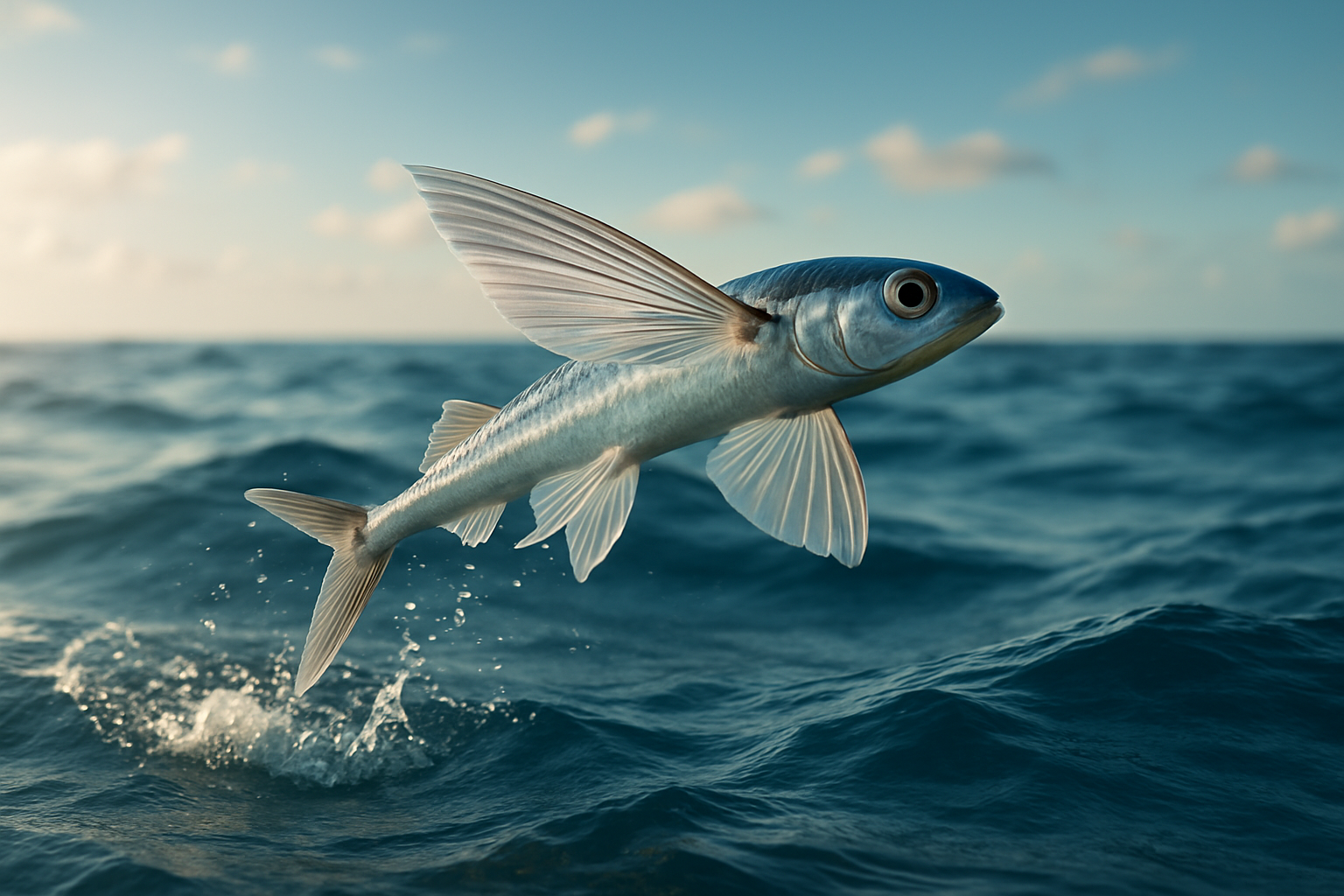Aquatic Acrobats: The Surprising World of Flying Fish
Soaring above the waves, their fins glinting in the sunlight, flying fish have long captivated sailors and marine enthusiasts alike. These remarkable creatures, capable of gliding up to 650 feet in a single flight, represent a fascinating example of evolutionary adaptation. Join us as we dive into the extraordinary world of these aquatic acrobats, exploring their unique abilities, behaviors, and the challenges they face in our changing oceans.

The evolution of flight in these marine species is a testament to nature’s ingenuity. Fossil records suggest that flying fish first appeared during the Oligocene epoch, approximately 66 million years ago. Since then, they have diversified into over 60 known species, each with its own unique adaptations for aerial locomotion.
The Mechanics of Fish Flight
Flying fish employ a remarkable technique to achieve their airborne feats. To initiate flight, they accelerate underwater, reaching speeds of up to 37 miles per hour. As they break the surface, they spread their enlarged pectoral fins and launch themselves into the air. Some species can even flap their pectoral fins to gain additional lift and extend their glide distance.
The fish’s streamlined body and flattened ventral surface contribute to their aerodynamic efficiency. Their tail fin, or caudal fin, remains in contact with the water during the initial stages of flight, allowing them to generate additional thrust and potentially initiate a second glide without fully reentering the water.
Species Diversity and Distribution
Flying fish are found in all of the world’s oceans, primarily in warm tropical and subtropical waters. The largest species, the California flying fish (Cheilopogon pinnatibarbatus californicus), can reach lengths of up to 18 inches and achieve flights of up to 650 feet. In contrast, the smallest species, the tropical two-wing flyingfish (Exocoetus volitans), typically measures only 6-7 inches in length.
Different species have evolved various adaptations to suit their specific habitats. For example, the four-winged flying fish (Hirundichthys affinis) has developed enlarged pelvic fins in addition to its pectoral fins, allowing for increased maneuverability during flight.
Ecological Importance and Human Interactions
Flying fish play a crucial role in marine ecosystems, serving as a vital link in oceanic food chains. They are an important food source for larger predatory fish, seabirds, and marine mammals. Their eggs, which are attached to floating objects by sticky filaments, also provide sustenance for various marine creatures.
Humans have long been fascinated by these aeronautical fish, and they hold cultural significance in many coastal communities. In Barbados, the flying fish is a national symbol and a staple of the local cuisine. The fish is featured on the country’s coat of arms and is the focus of an annual Flying Fish Festival.
Commercial fishing of flying fish occurs in several regions, particularly in the Caribbean and parts of Southeast Asia. The global market for flying fish roe, known as tobiko, has grown significantly in recent years, with prices ranging from $25 to $100 per kilogram, depending on quality and demand.
Conservation Challenges and Future Prospects
Despite their widespread distribution, flying fish face several conservation challenges. Climate change and ocean acidification threaten to alter their habitats and disrupt their food sources. Overfishing in some regions has led to concerns about population declines, particularly for species with limited ranges.
Efforts are underway to better understand and protect these unique creatures. Research projects using advanced tracking technologies are providing new insights into flying fish migration patterns and behaviors. Conservation organizations are working to promote sustainable fishing practices and raise awareness about the ecological importance of these airborne marine species.
As we continue to unravel the mysteries of flying fish, it becomes increasingly clear that these remarkable creatures are more than just a curiosity of nature. They represent a stunning example of evolutionary adaptation and play a vital role in maintaining the health and balance of our ocean ecosystems. By protecting and studying these aquatic acrobats, we not only ensure their survival but also gain valuable insights into the intricate workings of our marine environments.




